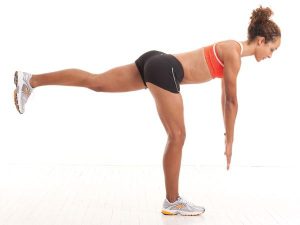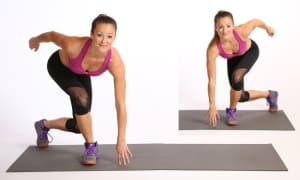When you think of fall, what do you think of? Pumpkin spice lattes… leaves changing colors… ROAD RACES? With the weather cooling off, people flock to the outdoors to run, jump, and play. There is also an increase in the advertisements for road races – 1 mile fun run, a hilly 5K for the more adventurous, even the marathons for avid runners. These races serve as a competitive outlet for some, and as a goal or benchmark for others to identify their improvement from previous races…they want that PR!
As running terrain, volume, and/or training changes, it is important to train properly to prevent injuries; should an athlete suffer an injury, they probably want to return to the pavement as soon and as safely as possible. Some of the most common running injuries include:
- plantar fasciitis
- peroneal tendonitis or posterior tibial tendonitis
- patellofemoral pain (pain behind the kneecap)
- iliotibial band syndrome -hamstring strain
- sciatica -low back pain
- Shoulder and/or neck pain
Each of these pathologies may occur due to overuse and/or mechanical deficits. If you believe you are experiencing this, it is important to reach out to your physician or physical therapist in order to find the underlying cause. Your physical therapist will also be able to design a program specifically for your needs in order to address the pain and cause.
There are three times where injuries are most prevalent to runners: initiating running into the exercise regimen, returning to running following an injury, or increasing running volume (speed, distance, hills, and/or frequency). The suggested increase in distance is approximately 10% per week, depending on your level of experience
It is also important to train your muscles outside of the runs themselves to promote flexibility and stability through the appropriate muscles groups in order to minimize injury.
Below you will find some recommendations:
- Dynamic Single-leg proprioception: balancing on one leg with movement in multiple directions (Regression: Double leg Dynamic Balance; Progression: Increase Difficulty of dynamic movement)
- 2:1 Leg Press : push away with two legs and then come back with one leg (Regression: 2:2 Leg Press with Theraband around knees; progression: Step-Downs with dumbbells)
- Skaters: Start in a small squat. Jump sideways to the left, landing on your left leg. Bring your right leg behind to your left ankle and then reverse. (Regression: Double leg squat Jumps or star drill; progression: decrease surface stability)
- Theraband Monster Walk : Start in a squat with a Theraband around your ankles and walk side to side. (Regression: clamshells)
Don’t forget stretching which is just as important as strengthening:
- HS stretch
- Hip Flexor Stretch
- Adductor Stretch
- Piriformis Stretch
- Upper Trap Stretch
- Myofascial Release throughout thoracic and lumbar spine, hip complex, and lower extremity musculature (foam roller, lacrosse ball, manual therapy)









